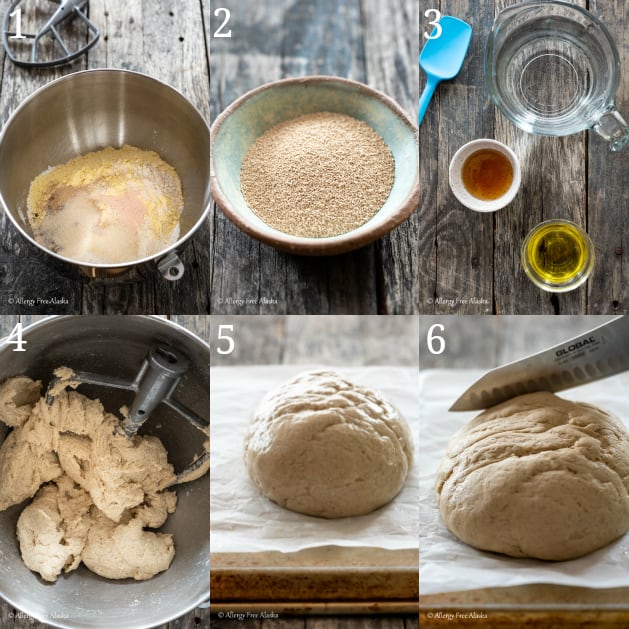
In applications where wheat flour is replaced with gluten-free flour gums can provide some of the structure for which gluten is responsible. Gluten is what makes dough elastic.

By contrast the all-purpose flour we generally use for baking contains anywhere between 9 grams and 11 grams these same proteins.
How to make gluten free dough more elastic. Put the flour in a food processor and the sugar and the salt pulse a few times to mix. Cut up the butter into tabs and put in the food processor pulse five or six times to mix. Turn the processor on and while it is running put in the water.
Making dough balls from water and vital wheat gluten water and wheat flour and water and gluten-free flour students get hands-on with dough and the difference gluten makes in how stretchy and elastic a dough is. Add xanthan gum to gluten-free flour. It enhances elastic qualities that gluten-free flours lack making it easier to work with and less likely to crumble.
Add plenty of water to the gluten-free flour to prevent the pastry from becoming too dry when rolling out. Do you grease a pizzelle iron. How do you make gluten-free bread rise higher.
Lightly cover the loaf pan with a damp towel and place in the oven for 20 to 30 minutes or until the dough rises to the top of the loaf pan. This method really does speed up the time it takes for gluten-free bread to rise. Can you over prove gluten free bread.
In applications where wheat flour is replaced with gluten-free flour gums can provide some of the structure for which gluten is responsible. That structure is what lends itself to a fluffy moist. Gums provide similar functionalities of the gluten network by delivering thickening extensibility and structure in gluten-free applications.
Binders in baking help to strengthen the protein structures which results in a higher elasticity dough. They also help to trap air bubbles in the dough making it rise. Without a binder the dough will turn out more like a cracker than a pizza crust as the air just passes through the dough.
Bread flour aka strong flour contains gluten a protein which by some mysterious process makes dough elastic when you knead it enough. If you really want to make bread with normal flour you can add gluten to upgrade it. Bread flour contains 13 or more grams of gluten-forming protein per cup.
By contrast the all-purpose flour we generally use for baking contains anywhere between 9 grams and 11 grams these same proteins. This means that doughs made with bread flour will be stronger and more elastic and the breads they make will be more dense and chewy. High protein flour and kneading.
High protein flour has more gluten than others. Gluten is what makes dough elastic. Kneading the dough developes the gluten into strands making dough stretchy.
But glutenfree baking has come a deliciously long way as more glutenfree flours and gums such as xanthan gum and guar gum have become available. These gums eggs egg whites and leavening agents like baking powder and baking soda will create elasticity and structure and impart moisture to your baked goods. Add the yeast mixture 1 cup at a time beating well between additions.
Switch to the dough hook attachment and knead for 5 to 6 minutes until elastic. Shape the dough into a ball and transfer to a greased bowl. Cover with greased plastic wrap and let rise in a warm place until doubled about 1 hour.